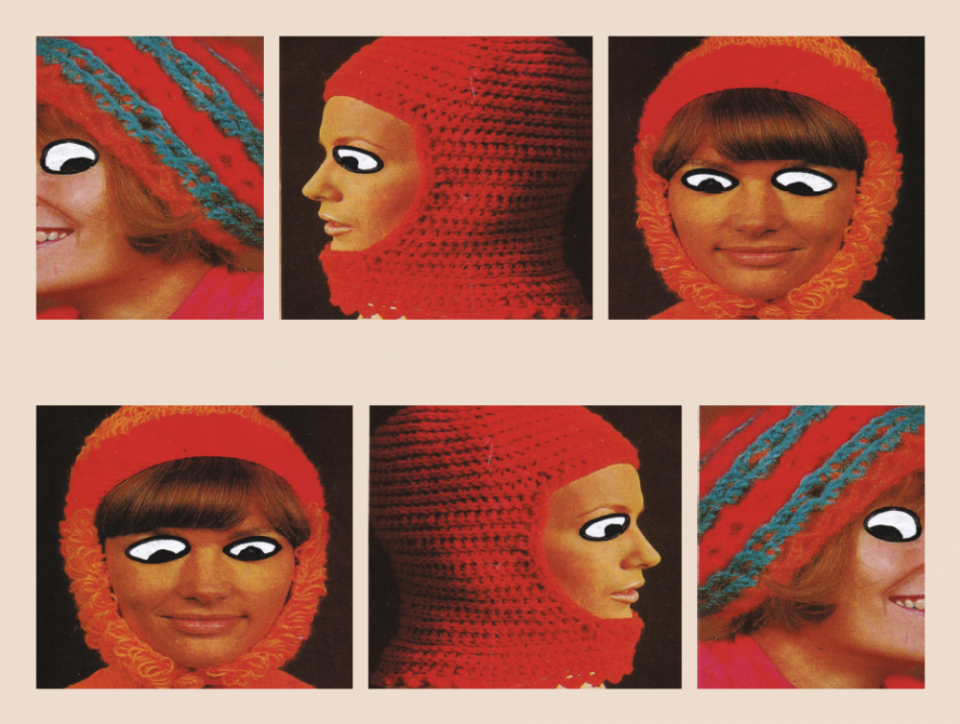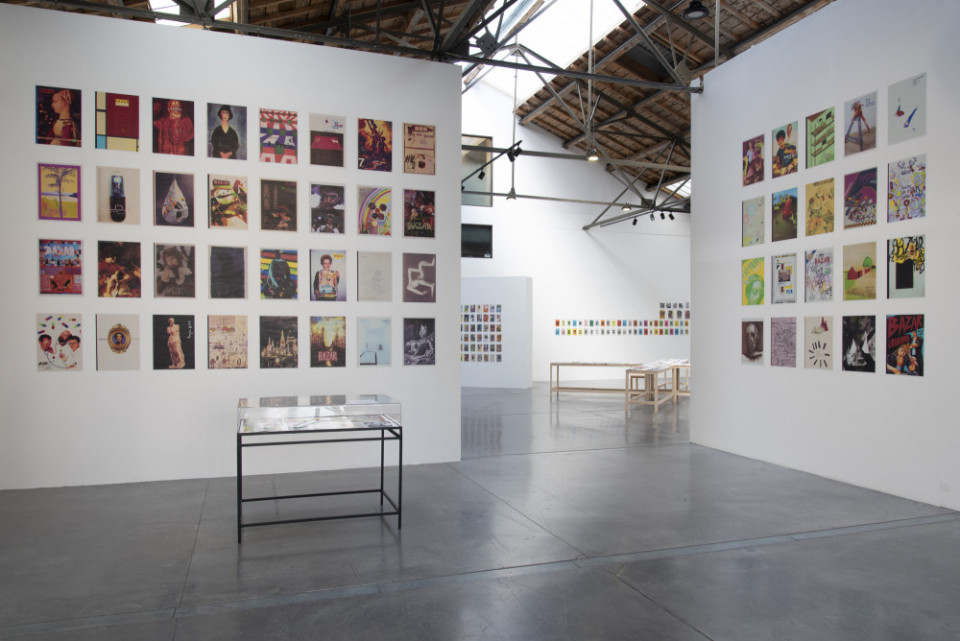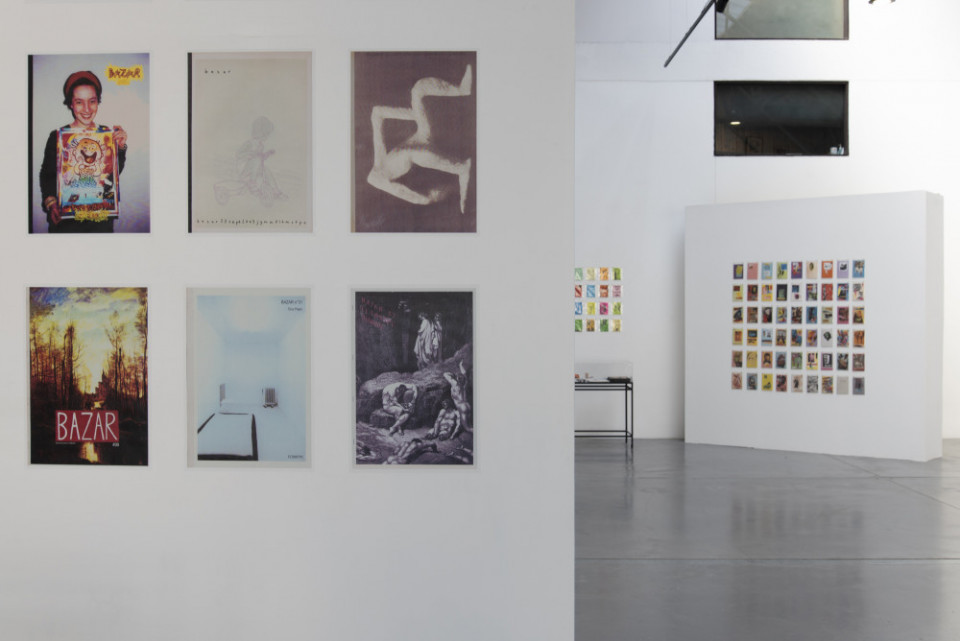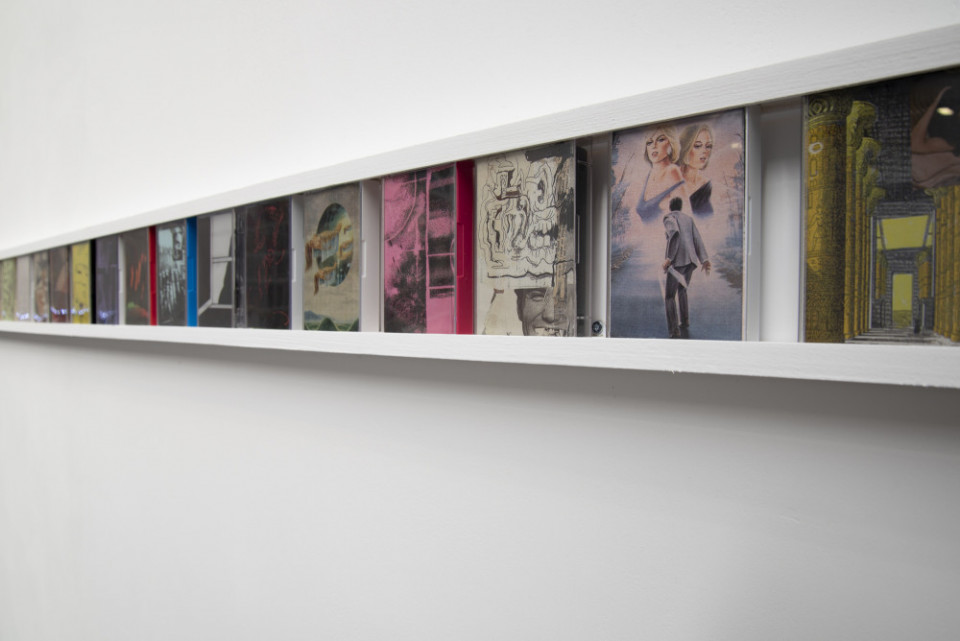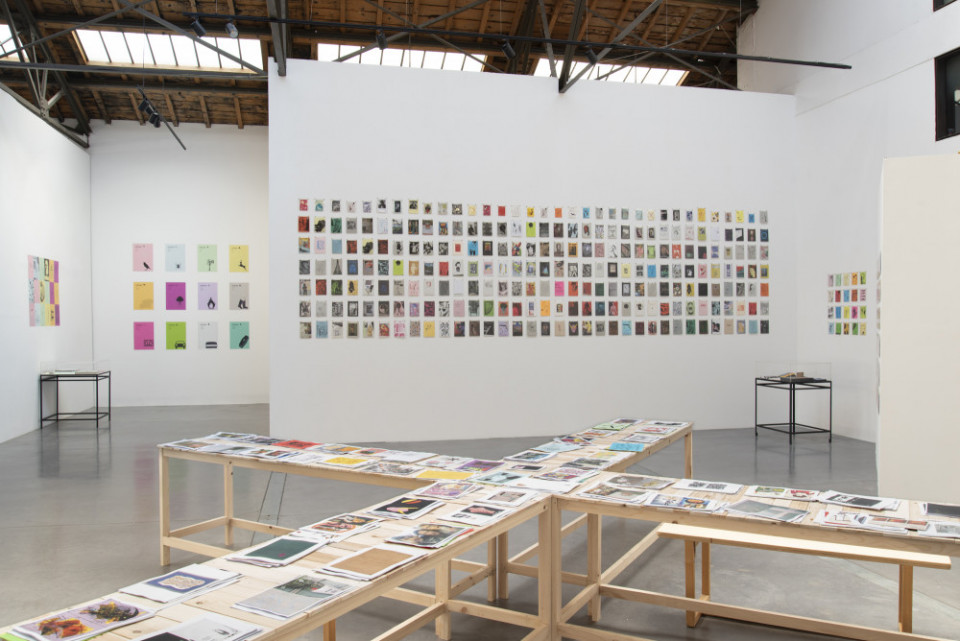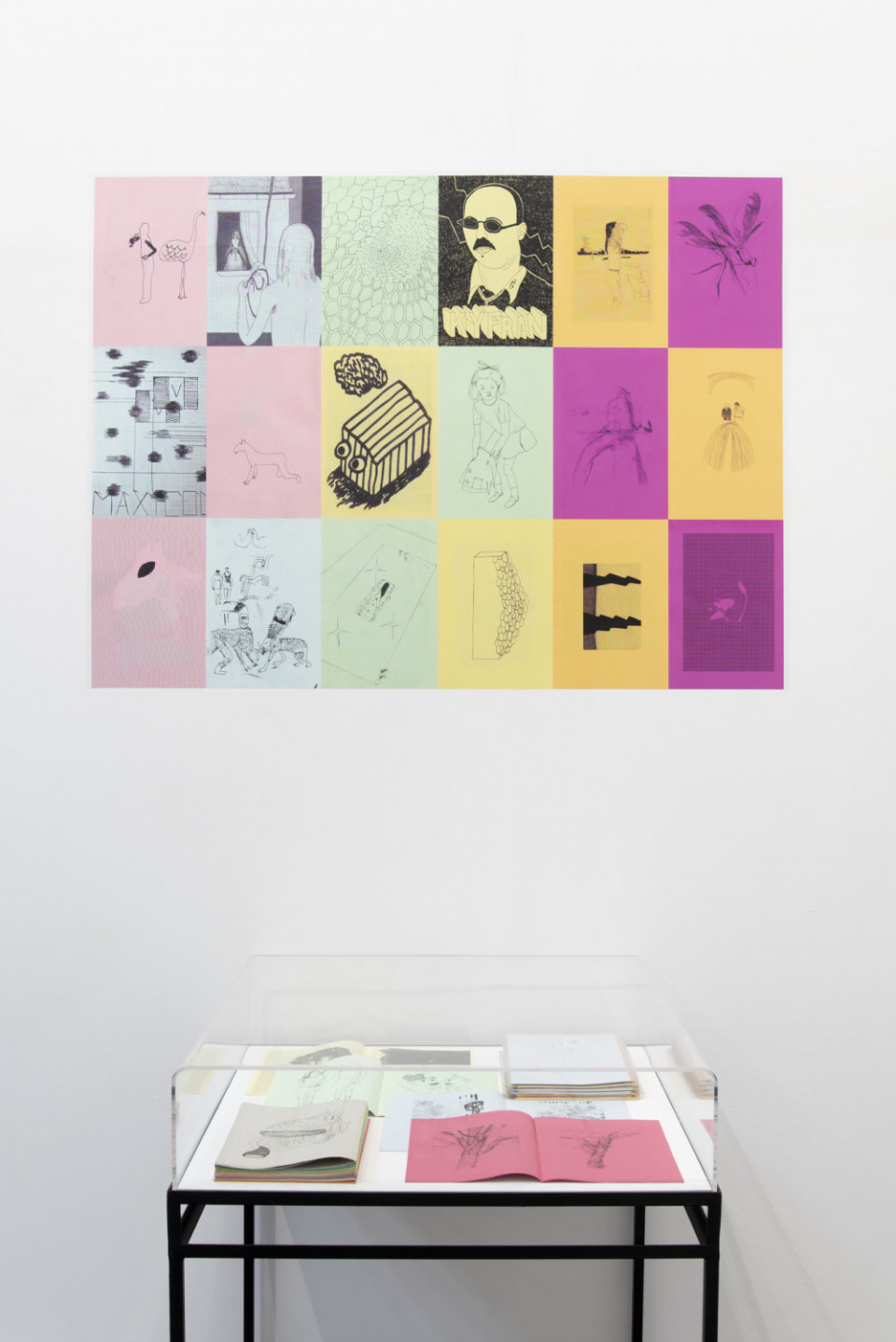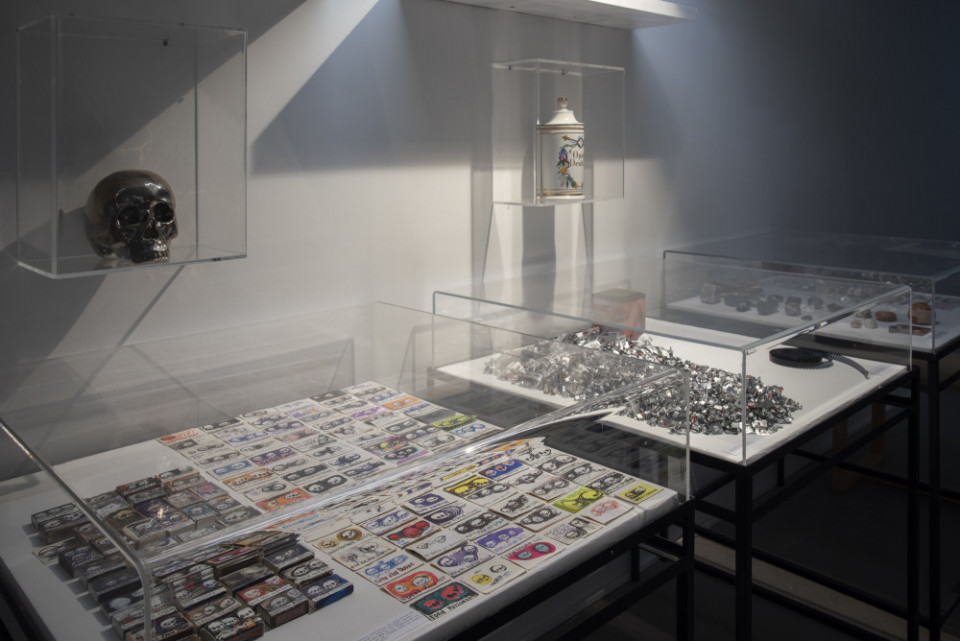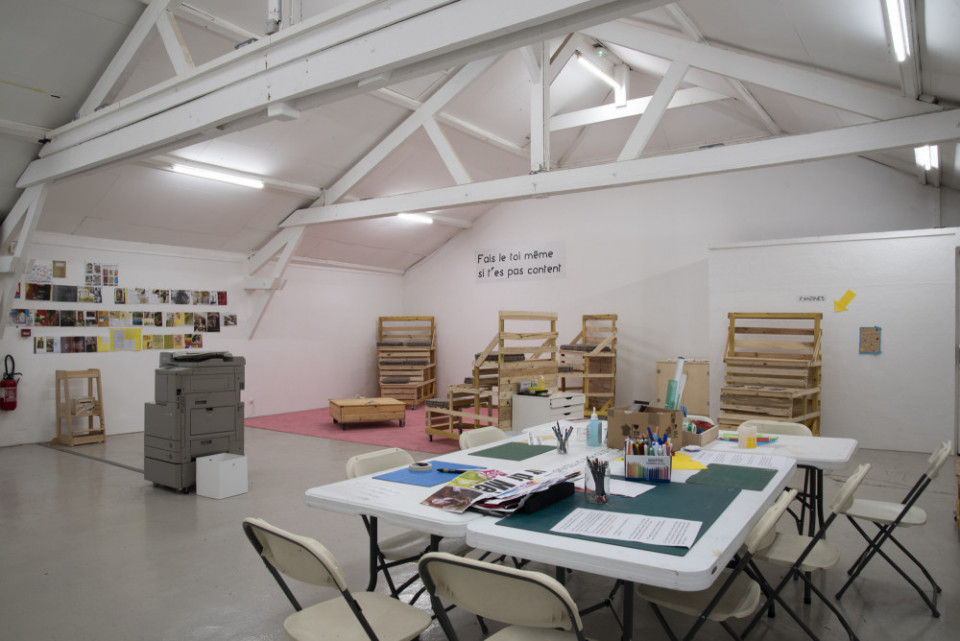Commissariat : Stéphane Prigent
Fais-le toi-même si t'es pas content (F.L.T.M.S.T.P.C.)
Exposition
Et les artistes (en vrac) Agnés Beuneux, Olivier Allemane, KARA, Pascal Doury, Captain Cavern, Sébastien Morlighem, Jean-Kristau, Adrien Gentil, Romaric Sobac, Jeanne Boyer, Jacques Noël, Marie Noël, Aurélie Carlier, Grégoire Charbey, Lucille Desamory, Hendrik Hegray, Alison Hegray, Kerozen, Frédéric Poincelet, Donato Di Nunno, Anne-Fred Maurer, Jérémie Grandsenne, Sébastien Nicolini, Julien Carreyn, Anne-Laure Draisey, Eva Revox, Adeline & Émilie Demarquay, Frédéric Fleury, Emmanuelle Pidoux, Eric Pougeau, Isabelle Boinot, Laetitia Gendre, Antoine Marquis, Jean-François Karst, Eugénie Lavenant, Franky Ravi, Benoît Billoud, Nicolas Guiet, Guillaume Navaud, Isabelle Cornaro, Simon de la Porte, Tony Papin, Jonas Delaborde, Tarsila, Kiki Fruit, Michel Wisniewski, Christian Aubrun, Plancton 9, Thomas Bernard, Grégory Wagenheim, Nicolas Muller, Mehdi Hercberg, Minalala, Hector de la Vallée, David Douard, Guillaumit, Andy Bolus, Amandine Meyer, Laurent Plessier, Romain Perrot, Yu Matsuoka, Vanessa Dziuba, Andrés Ramirez, Ludovic Boulard Le Fur, Julie Redon, Séverine Gorlier, Stéphane Argillet, Bori Son, Denis Knepper, Nicolas Nagamoto, Toffe, Baudouin Marnez, Carine Tarin, José-Maria Gonzales, Simon De La Porte, HOTU, Massimiliano Bomba, Leomi Sadler, Yannick Val Gesto, Vladimir Besson, Jean-Philippe Bretin, Antoine Orand, Gabriel Prigent, Frédéric Madre, Timothée Comte, Apollo Thomas, Hélène Jeudy, Olivier Pigassou, Julien Meert, Christian Gfeller, Tetsunori Tawaraya, Paul Bonnet, Zofie Taueber, Etienne Vergier/Matteo Verzini et Chloé Julien.
Artiste invité pour une installation inédite : P.E.S.*
« Les machines règnent aujourd’hui sur le monde. […] Seuls les artistes ont le pouvoir de soustraire l’humanité à ce danger. Il revient aux artistes de renoncer au romantisme poussiéreux du pinceau, de la palette, de la toile et du châssis, pour s’intéresser aux machines. […] Comprendre la vraie nature des machines permet d’en détourner le sens. […] La machine doit devenir une œuvre d’art ! 1 »
Depuis plusieurs années, le 19, Crac invite une fois par an un·e ou des commissaires aux profils et aux points de vue volontairement inattendus à investir le centre d’art avec un projet artistique affirmant ainsi la dimension expérimentale du lieu, sa capacité d’auctorialité partagée et son intérêt pour l’ensemble des formes de la création contemporaine.
En 2023, Fais-Le Toi-Même Si T’es Pas Content est le titre de l’exposition curatée par Stéphane Prigent. C’est également le nom de sa maison de micro-édition qui fête ses 25 ans. Abrégée la plupart du temps en F.L.T.M.S.T.P.C., elle publie des livres, des fanzines et des disques depuis 1999. Son catalogue comprend aujourd’hui près de 500 publications qui ont contribué à la diffusion des pratiques d’artistes ou non-artistes issu·es de différents horizons invité·es à répondre aux protocoles et aux logiques sérielles qu’il orchestre. Stéphane Prigent, alias Kerozen, est connu et reconnu pour son activité frénétique de dessinateur en plus de sa pratique d’éditeur.
Dans L’œuvre d’art à l’époque de sa reproductibilité technique, le philosophe, critique littéraire et critique d’art allemand Walter Benjamin observe dès 1935 les nouvelles conditions de production et de réception de l’œuvre d’art au XXe siècle en lien avec l’apparition de la photographie puis du cinéma. Le contexte de la création artistique se trouve alors bouleversé dans une société industrielle en pleine transformation. L’invention de l’électrophotographie en 1938 et de la xérographie (photocopie) en 1947 parachève les conclusions de Benjamin : si le déclin de l’aura et le concept d’authenticité et d’unicité de l’œuvre d’art comporte de potentiels risques de manipulation des masses, la reproductibilité des œuvres leur permet aussi de devenir accessibles au plus grand nombre. Elle favorise une autonomisation des moyens de production comme de la réception. Cette démocratisation permet, selon lui, de passer de la valeur cultuelle à la valeur d’exposition, d’un art rituel à un art politique.
Ainsi, dans la tradition du Do It Yourself [« Faites-le vous-même », en français], les éditions F.L.T.M.S.T.P.C. usent et abusent de la photocopie comme outil d’auto-édition, d’auto-publication et comme meilleure alliée de l’auto-diffusion compte tenu de sa rapidité de production. Le choix de la « reproductibilité technique » est aussi politique afin de favoriser la libre circulation des idées et des créations, le partage des savoirs, l’indépendance vis-à-vis des institutions et le soutien des pratiques artistiques de communautés de pair·es.
L’émulation créative et productive de F.L.T.M.S.T.P.C. est invitée à investir l’espace du 19, Crac avec un geste inédit : celui d’une archive complète de 25 ans d’éditions. Habitué à la production et à la diffusion rapide, Stéphane Prigent s’attèle ici à une nouvelle proposition éditoriale en soi : un panorama rétrospectif rassemblant plus de 500 publications. L’exposition offre aussi des possibilités d’activations, de co-constructions et d’apprentissages partagés.
Il s’agit également de confronter l’espace du centre d’art à d’autres manières de créer, en marge de l’art contemporain institutionnel et qui, pourtant, réunissent plusieurs problématiques de l’époque : économie de moyens, reproductibilité de l’œuvre, circuit court, proximité affective, logique de protocole et de série, édition comme véhicule généreux de propagation de la création.
Bien qu’elle intrigue et rentre progressivement dans les logiques de politiques d’expositions et d’acquisitions institutionnelles, la pratique de la micro-édition vient bousculer les taxinomies conventionnelles. La célébration des 25 ans de F.L.T.M.S.T.P.C. est l’occasion de rassembler et déployer cette histoire en questionnant par la même occasion et plus globalement les modalités alternatives de la production artistique aujourd’hui.
Adeline Lépine, directrice du 19, Crac
- Bruno Munari, Extraits du Manifeste du machinisme, 1952. ↺
